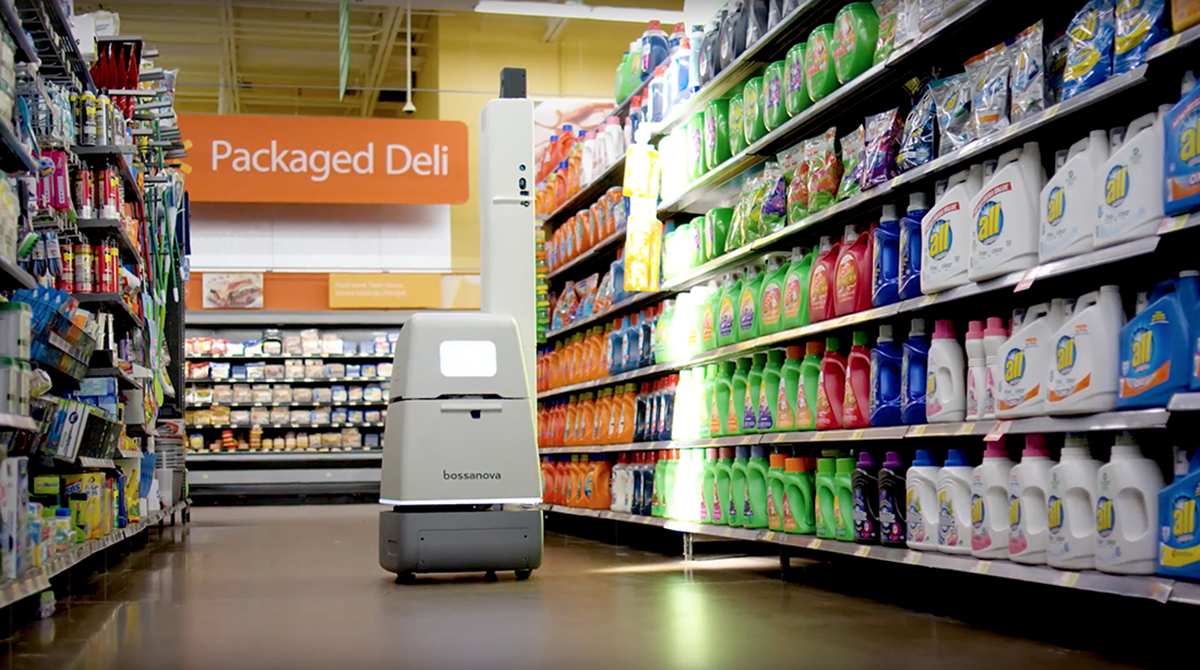Augmented reality. Robots. Weed-infused dishes. While these products haven’t reached broad adoption in the hospitality industry just yet, with changing regulations and consumer attitudes it likely won’t be much longer.
Appealing to an ever-evolving group of tech-savvy customers can be tricky and requires restaurants to capitalize on the latest and greatest trends. By meeting the forecasted demands of consumers, food service providers can build deeper relationships with customers and gain brand loyalty as a result.
These three products presented at the RC Show Canada 2019 have the potential to deliver winning results for restaurants of the (near) future.
3D MENUS
Often enough a well written dish description is enough to get mouths watering, so just imagine the power of an interactive three-dimensional version of that same food item. 3D Food and Drink by Upcoming Media does just that by providing customers with an immersive augmented reality (AR) experience through interactive digital menus.
“If somebody has ordered something, say international cuisine, they’d have a hard time understanding exactly what they are ordering,” said Mark Shaw, CEO & Founder of Upcoming Media. “We alleviate that problem by having a full 3D representation that is photo realistic and right in front of you when you order.”
Just got a really cool demo from @UpcomingMedia of their 3D Food and Drink software. Users can use their smartphones to view menu items in 3D, along with all ingredients and dietary requirements. #thefutureoffood @XtalksFood @RCShowCanada pic.twitter.com/AeWogTEvsT
— Tegan Versolatto (@TeganVersolatto) February 26, 2019
The start-up has partnered with renowned virtual reality (VR) & AR company MetaVRse to create digital food that looks good enough to eat. Alan Smithson CEO of MetaVRse says while the technology may seem futuristic to some, it’s exactly where the food industry is heading.
“Look back 15 years ago, people that were laggards on the web were getting left behind, and other smarter companies went right past them. The same thing is happening with virtual and augmented reality, this is the future of human communications,” said Smithson, CEO of MetaVRse.
Not only does the technology have the potential to increase the desire for certain products, but it can also greatly improve the customer experience.
“You can also view dietary information, allergies, anything that is specific towards any restrictions you may have, religious or due to your own dietary needs,” continued Shaw.
The company was inspired to bring the product to North America after witnessing similar technology in Turkey and parts of Asia. It seems it’s just the start, with the VR & AR market expected to reach $814.7 billion by 2025, according to projections by Research firm Statista.
ROBOT SERVERS
Already popular in countries like China and Japan, robot servers are making a push for the North American market. While the concept is still new here, Autonetics Universe is betting that their Waitress Robot can win over consumers in this part of the world as well.
“She has facial recognition, she’s able to know you’re sitting at a table. She’ll approach you and take your order,” said Ozge Tarim, Business Consultant with Autonetics Universe. “She can speak to you as well in any language, she’s completely programmable.”
Standing at 5’5” and weighing 121 lbs, Waitress Robot can also carry a load of up to 33lbs. She’s made of glass fiber, reinforced plastic, acrylic, rubber and steel and equipped with anti-collision technology as well as ten-hour battery life.
While robots tend to generate the idea that these advanced pieces of technology will steal all human jobs Autonetics Universe contends that’s not the case.
“We see that they’ll be more of coworkers, the waiters and the waitresses. They’re not going to be replacing their jobs, it’s more going to be eliminating those repetitive tasks. Like bringing water or coffee, those sorts of things,” said Tarim.
Convenience does however come at a cost. The line of commercial robots from Autonetics Universe is currently available in Canada, ranging in price from $6,999 to $24,999 CAD.
EDIBLES
Weed-infused foods have proliferated the black market for years, but with cannabis recently legalized in Canada and hemp recently legalized in the States, commercially available edibles are closer to becoming reality than ever before.
As of October 2019, edibles are expected to become fully legalized in Canada, setting off what is predicted to be one of the hottest upcoming food trends in restaurants and tourism.
“So many chefs are already experimenting with edibles and having infused dinners,” said Lisa Campbell, President & CEO of Lifford Cannabis Solutions. “They’re talking about the potential for infused restaurants, infused bars, so I think we’re going to see a lot of consumers shifting away from alcohol and shifting towards cannabis.”
Campbell is currently the Chair of the Ontario Cannabis Consumer & Retail Alliance and has become a cannabis expert by working extensively in international drug policy. As CEO of Lifford Cannabis solutions, she also helps companies navigate the emerging legal cannabis industry and guides their products to store shelves across Canada.
Pleasure chatting with @qnp about the future of cannabis in the food industry in Canada and beyond. Interview coming to @XtalksFood soon! Keep an eye out 👀 pic.twitter.com/fuVfa4xNPj
— Tegan Versolatto (@TeganVersolatto) February 26, 2019
“It is really important for restaurants to find things to add value to their menus. We really think cannabis has huge potential,” said Campbell. “As a wine and spirits distributor we distribute to over 16,000 restaurants in Ontario, so for us we really want our current clients on-premise to be able to access the benefits of cannabis for their consumers and restaurants.”
Research shows that consumers are curious too, a recent Deloitte report found that 58 percent of current Canadian cannabis users intend to consume edibles once they’re legalized.
As today’s customers expect high-quality and innovative guest experiences, tomorrow’s successful restaurants will be the ones who invest wisely in state-of-the-art products and technology.












Join or login to leave a comment
JOIN LOGIN